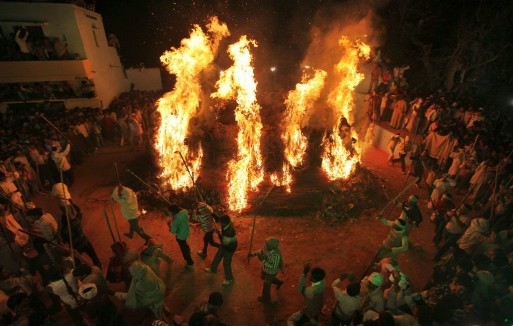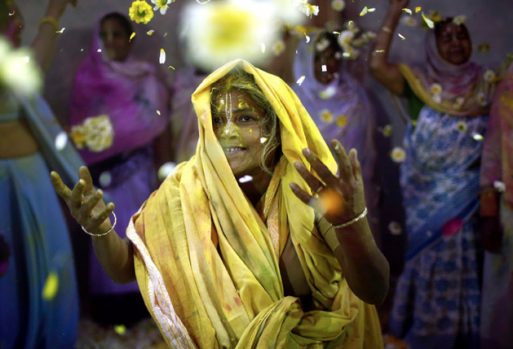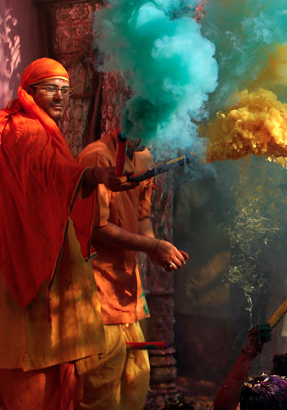When the moon waxes full in the first days of March, it’s an sign for Indians that Springtime is coming. And the days following this first full moon mark the arrival of one the India’s most colorful festivals: Holi. Otherwise known as the Festival of Colors, today Holi is known as India’s time of celebration, rebirth and gratitude after the death and depletion of Winter. Though the festival is of Hindu origin, today it is widely celebrated (there is even a European Festival of Colors).
“Holi is known as India’s time of celebration, rebirth and gratitude after the death and depletion of Winter.”
The origins of the sanskrit word ‘Holi’ come from ‘hola,’ which translates roughly to « giving thanks for the bounty of a good harvest. » Traditionally, the Hindu who pray to give thanks during this time are saved from the fate of being turned into ash by Holika, sister of the demon-King Hiranyakashipu. According to Hindu legend, Hiranyakashipu was furious when his son Prahad chose to worship the Hindu God Vishnu. Thus, Hiranyakashipu asked Holika to punish Prahlad by engulfing him in flames. It should have been easy enough for Holika, who had the power to walk through fire unharmed – although she would soon discover she could only do so alone, and perished when she took Prahad to walk through the flames with her. But Prahad chanted the names of God and was saved from death.
“Prahad chanted the names of God and was saved from death.”

The Holi fire.
(Credit: The Windsor Star)
In the Braj region of India, Holi is celebrated for just over two weeks. But before the colorful festivities can begin, communities gather wood and prepare an enormous pyre on which they place an effigy of Holika. In the days before beginning the Festival of Colors, they burn the pyre to symbolize Holika’s death. And in a larger sense, the bonfire represents Prahad’s triumph over the darkest of powers – hence the urge for Indians to follow the bonfire, which is always held at sunset, with a vibrant celebration of life.
“But before the colorful festivities can begin, communities gather wood and prepare an enormous pyre on which they place an effigy of Holika.”
Holi is a time of music-making, dancing, and general merriment. Indians celebrate by sharing traditional meals like gujiya, mathri and malpuas as they mix pigments for colorful paints that they throw in the air in celebration. In the 14th century, the most popular Holi colors (known as gulal ) were mixed from flowers of a tree called the “Flame of the Forest.” With their rich red and orange color, these flowers made the perfect pigment for Holi.
India’s Festival of Colors demonstrates a very celebratory relationship to both life and death. Indeed, Indians see the bonfire as an acknowledgment of death, which plays an important role in preceding the days of merriment. Life and death will forever chase each other’s tails, and Holi brings this fact to the forefront of the festival through their lively and cathartic traditions.
You may enjoy:
- Exploring this website for Europe’s Festival of Colours
- SevenPonds’ article,”the End-of-Life and Death in India:
Cultural and Religious Traditions Across the Vast Country” - SevenPonds’ article, “Gandhi, An Unparalleled Man Representing Non-Violence:
We Honor Him By Visiting His Memorial, Raj Ghat and Devoting A Week to India”

 In Living Color: India’s Holi Festival
In Living Color: India’s Holi Festival





 Debating Medical Aid in Dying
Debating Medical Aid in Dying
 “Help Me, Helen”
“Help Me, Helen”















